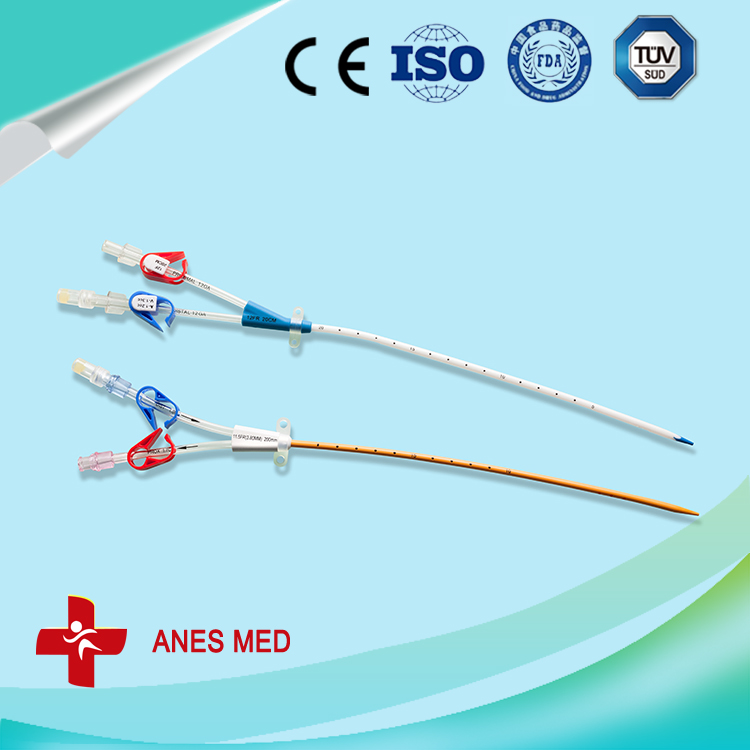Homogeneous fluorescence immunoassay
2021-02-11 23:18:51
Homogeneous fluorescence immunoassay (homogeneousfluorescence immunoassay) is a novel immunofluorescence analysis technique based on the development of homogeneous enzyme immunoassay (HEl) established by Rubenstein et al in 1972. By "homogeneous" is meant that it is not necessary to separate the free and bound label after the reaction is completed, and it can be directly measured. Homogeneous fluorescence immunoassay is based on the use of some special physicochemical properties of fluorescence (such as fluorescence excitation, absorption, quenching, etc.), and changes in the binding of labeled antigens to specific antibodies, according to various test methods established.
(1) Fluorescence quenching immunoassay Fluorescence quenching immunoassay (fluorescence quenching immunoassay) reaction system in addition to the drug to be tested, simultaneously adding a certain small molecule antigen to be tested and a certain amount of the antigen labeled with a fluorescent substance, both with a limited amount Specific antibodies compete for binding. When the antibody binds to such a labeled antigen, quenching occurs to cause the fluorescence of the fluorescent substance to disappear; thus, the polarization fluorescence intensity of the reaction system is directly measured without isolation. If the unlabeled antigen content in the sample is high, there are many competitive binding antibodies, which increase the free labeled antigen, and the fluorescence intensity is high after excitation by ultraviolet light, and the two are positively correlated, thereby quantitatively determining the antigen content of the sample.
(b) Fluorescence protection immunoassay In 1982, Hanssan et al. introduced anti-fluorescein antibodies in the assay to quench the free fluorescein in the reaction system. However, there is no effect on the fluorescence of the labeled antigen that has bound to the specific antibody, that is, the specific antibody binds to the labeled antigen to protect its fluorescence from the quenching effect of the anti-fluorescein antibody, thereby achieving the requirement of a homogeneous reaction. When the content of the unlabeled antigen to be tested in the sample is high, the competition binds with the specific antibody, and the free fluorescein-labeled antigen is increased. Due to the quenching effect of the anti-fluorescein antibody, the amount of fluorescence generated after the excitation is decreased, The person is negatively correlated, whereby the content of the antigen to be tested in the sample can be quantitatively determined. Fluorescence protection immunoassay (fluorescence protection immunoassay) can be used to determine thyroxine, human serum albumin, IgG and the like.
(1) Fluorescence quenching immunoassay Fluorescence quenching immunoassay (fluorescence quenching immunoassay) reaction system in addition to the drug to be tested, simultaneously adding a certain small molecule antigen to be tested and a certain amount of the antigen labeled with a fluorescent substance, both with a limited amount Specific antibodies compete for binding. When the antibody binds to such a labeled antigen, quenching occurs to cause the fluorescence of the fluorescent substance to disappear; thus, the polarization fluorescence intensity of the reaction system is directly measured without isolation. If the unlabeled antigen content in the sample is high, there are many competitive binding antibodies, which increase the free labeled antigen, and the fluorescence intensity is high after excitation by ultraviolet light, and the two are positively correlated, thereby quantitatively determining the antigen content of the sample.
(b) Fluorescence protection immunoassay In 1982, Hanssan et al. introduced anti-fluorescein antibodies in the assay to quench the free fluorescein in the reaction system. However, there is no effect on the fluorescence of the labeled antigen that has bound to the specific antibody, that is, the specific antibody binds to the labeled antigen to protect its fluorescence from the quenching effect of the anti-fluorescein antibody, thereby achieving the requirement of a homogeneous reaction. When the content of the unlabeled antigen to be tested in the sample is high, the competition binds with the specific antibody, and the free fluorescein-labeled antigen is increased. Due to the quenching effect of the anti-fluorescein antibody, the amount of fluorescence generated after the excitation is decreased, The person is negatively correlated, whereby the content of the antigen to be tested in the sample can be quantitatively determined. Fluorescence protection immunoassay (fluorescence protection immunoassay) can be used to determine thyroxine, human serum albumin, IgG and the like.
Hemodialysis Catheters are used to:
- Give long-term medicine treatment for pain, infection, or cancer, or to supply nutrition. A Hemodialysis Catheter can be left in place far longer than an intravenous catheter (IV), which gives medicines into a vein near the skin surface.
- Give medicines that affect the heart, especially if a quick response to the medicine is wanted.
- Give large amounts of blood or fluid quickly.
-
Take frequent blood samples without having to "stick" someone with a needle.
Receive kidney dialysis if you have kidney failure -
*Related Products:Anti-microbial Hemodialysis Catheter Kit,anti-microbial Hemodialysis Line Kit ,Anti-Microbial Dialysis Catheter kit.
.
-

Antimicrobia Hemodialysis Catheter
Antimicrobial Hemodialysis Catheter,Antimicrobial Hemodialysis Catheter Kit,Anti-Microbial Hemodialysis Catheter,Anti-Microbial Dialysis Catheter,Anti-microbial Hemodialysis Catheter Kit
Anesthesia Medical Co., Ltd. , http://www.sinoanesthesia.com